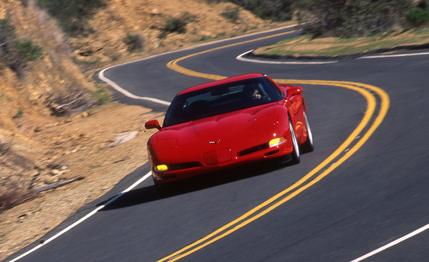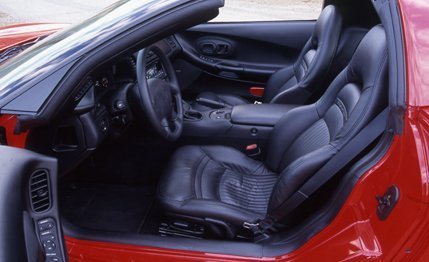
 Archived Road Test
Archived Road Test
Some Corvette partisans will see surrender in the new instruments, a cluster of simple black dials swept majestically by long, graceful needles. How unimaginative! How conformist! How Honda can you get?
How splendid, we say. Beyond the pure delight these new instruments provide to the eye, they also signal a change in attitude at Corvette headquarters. The old model was always the swaggering dissenter. In its quest to be different, it at first shunned the simple, round gauges that drivers around the world like in favor of Atari displays for speed and revs. When the critics protested, Corvette designers took a grudging step backward to needles and numbers by installing a halfhearted analog arrangement. The color? Orange.
In a complete about-face, this new car embraces what we might call the "car idiom"—the accepted way of doing things—and then improves on it. Look at the dash cluster: simple black dials like those of every Toyota and Honda, yet far more interesting because the round faces are subtly stacked atop one another at the edges to create an intriguing landscape within the cluster.


Good ideas weren't rejected in this car just because the Japanese had them first. The headlight switch was moved to the tip of the turn-signal lever, for example. The end result of all this unprecedented open-mindedness is a high-performance two-seater that is easy to love, not something we ever said about the previous-generation Corvette.
What you get is a car that reminds of the late Nissan 300ZX Turbo, a seven-time C/D Ten Best winner. Both cars have the sharp reflexes that make them enjoyable partners for the back-road boogaloo, but when you're done with the fun, you can throttle back, crank up the stereo, and ease on home in serene afterglow. With this new edition, the Corvette has become a sports car with great latitude.
Latitude? Uh-oh. Corvette partisans will read that as a watering down, the dreaded "broad appeal," something for the Martha Stewart crowd.
Not to worry, unless you think wearing a Corvette should hurt. The old one sure did, with its high-barrier-to-entry sills and pinched footwells and cramped width. The new car is completely reconfigured: nearly three inches wider overall, transmission moved to the rear, backbone structure in the center tunnel. So the sills are low now, for easy entry, and the foot spaces are wide (at last, a dead pedal for the clutch foot). No bunker confinement in this Corvette, and the low cowl greatly improves the driver's view forward.
Latitude is adjusting to accommodate a broad variety of human shapes. The power-adjustable seat of our test car had, in addition to the usual up-and-down, back-and-forth settings, two lumbar supports—one upper and one lower—plus changeable lateral support, all at the touch of various buttons. Better yet, the seat is shaped for humans, unlike the flat-sided buckets of the previous car. The manual-tilt steering column deserves mild criticism for having too few positions with too much angle change between each one, but it's adequate nonetheless.